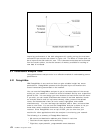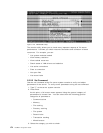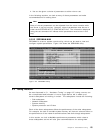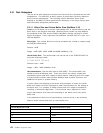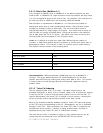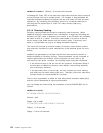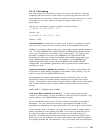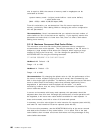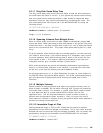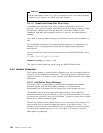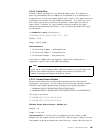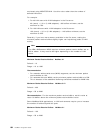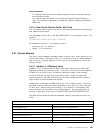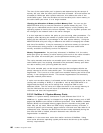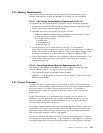size is equal to 4096, the amount of memory used in megabytes can be
calculated as follows:
system memory used = (original cache buffers - total cache buffers)
x cache buffer size
(3000 - 2500) x 4096= 2,048,000 bytes (2MB)
From this calculation, you can determine if the file server requires more
memory, particularly when adding NLMs or changing the server configuration
with set parameters.
Recommendation:
Novell recommends that you maintain the total number of
cache buffers at 70% of the total server memory. If you regularly monitor this
parameter and notice that it is lower than 70%, then it is time to think about
adding more memory.
5.3.1.6 Maximum Concurrent Disk Cache Writes
The maximum concurrent disk cache writes parameter can be changed to
accommodate more write requests. This may be necessary if the file server is
subject to a high number of disk writes (for example, when copying a large
number of files to the file server). You can change this parameter in the
AUTOEXEC.NCF file using the following command:
SET MAXIMUM CONCURRENT DISK CACHE WRITES=VALUE
NetWare 3.12:
Default = 50
Range = 10 to 1000
NetWare 4.1:
Default = 50
Range = 10 to 4000
Recommendation:
By changing the default value to 100, the performance of the
file server in write requests (copying files up to server) was increased by over
30% in this single type of operation. Furthermore, with the value set at 100 there
were no other areas of the testing routine that suffered significantly from a
degradation in performance and throughput did not suffer. It is worth
mentioning, however, that not every conceivable combination of possible file
server loads was tested.
In server environments with heavy read requests, this parameter should be
adjusted down from this level. Although the performance of write operations will
be degraded, it will leave more cache buffers available for read requests. In
these environments, start with a value of 30 and work upward.
In summary, tune this value higher for write intensive file requests (start with 80),
and lower for read intensive file server requests (start with 30).
To fine tune this parameter, use the MONITOR.NLM utility at the server console
and observe the number of dirty cache buffers. If it is above 70% of the total
cache buffers, then increase concurrent disk writes until the percentage of dirty
cache buffers decreases.
180 NetWare Integration Guide



